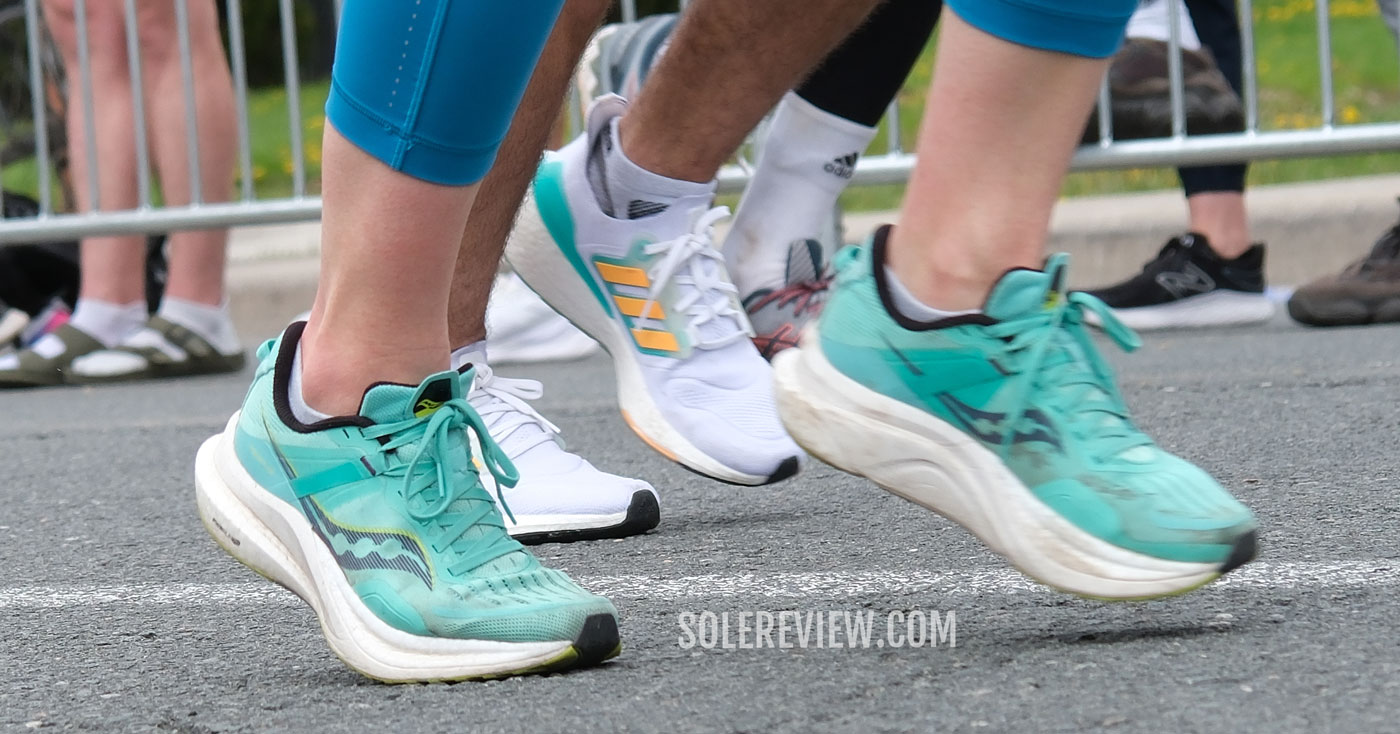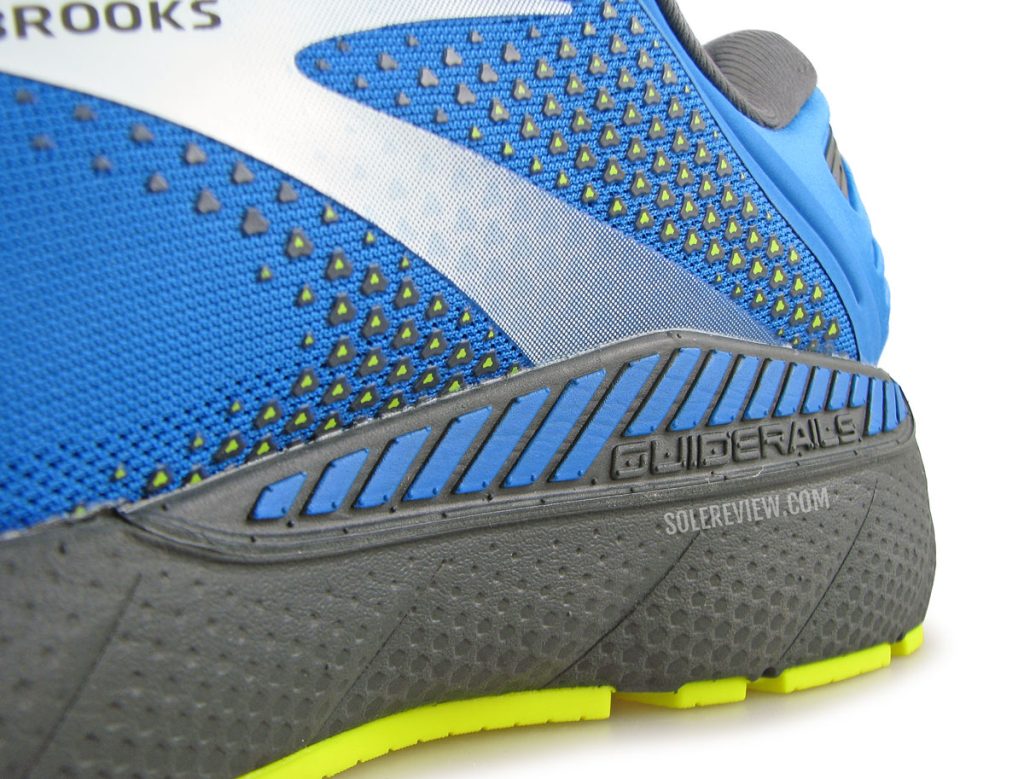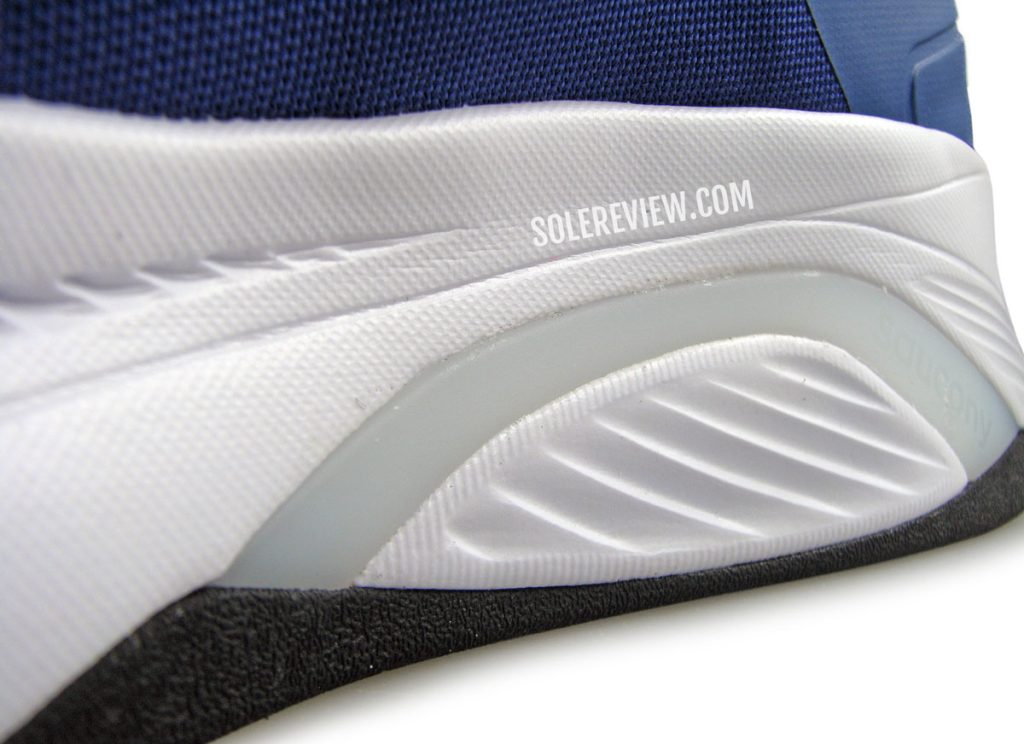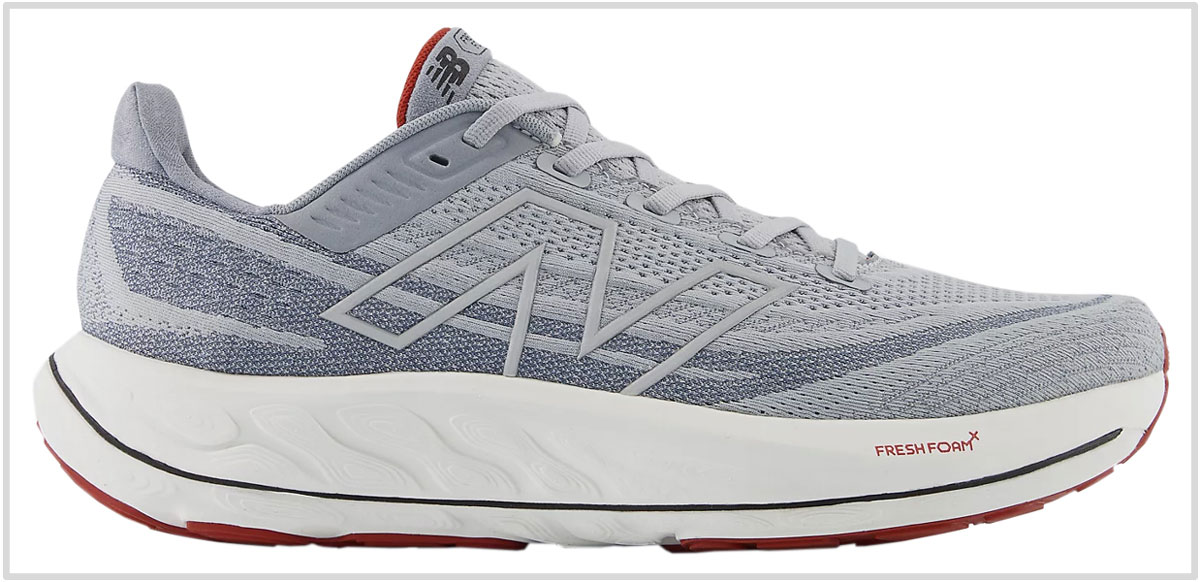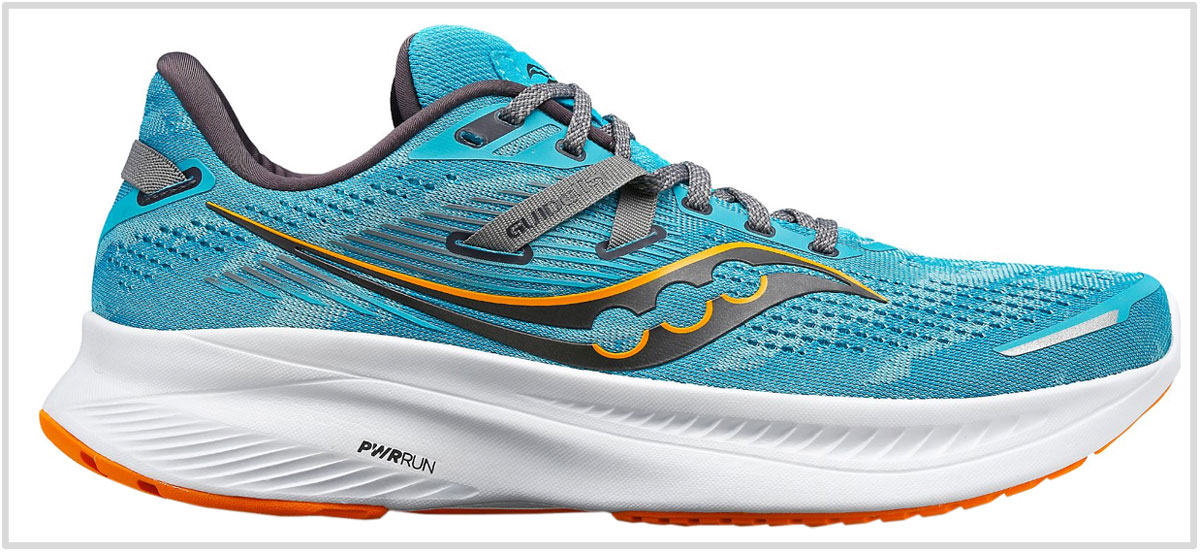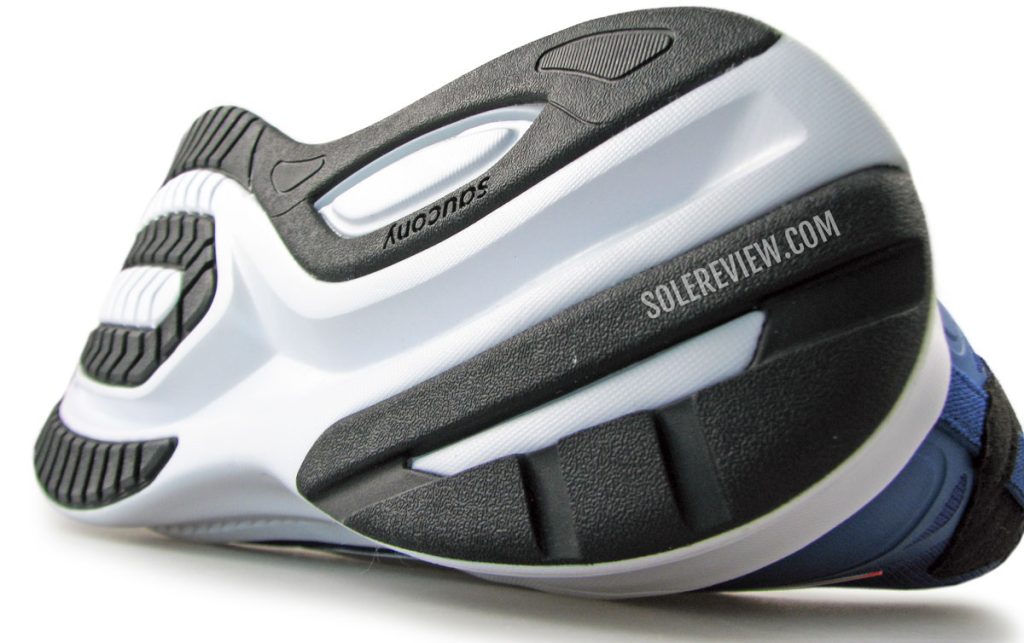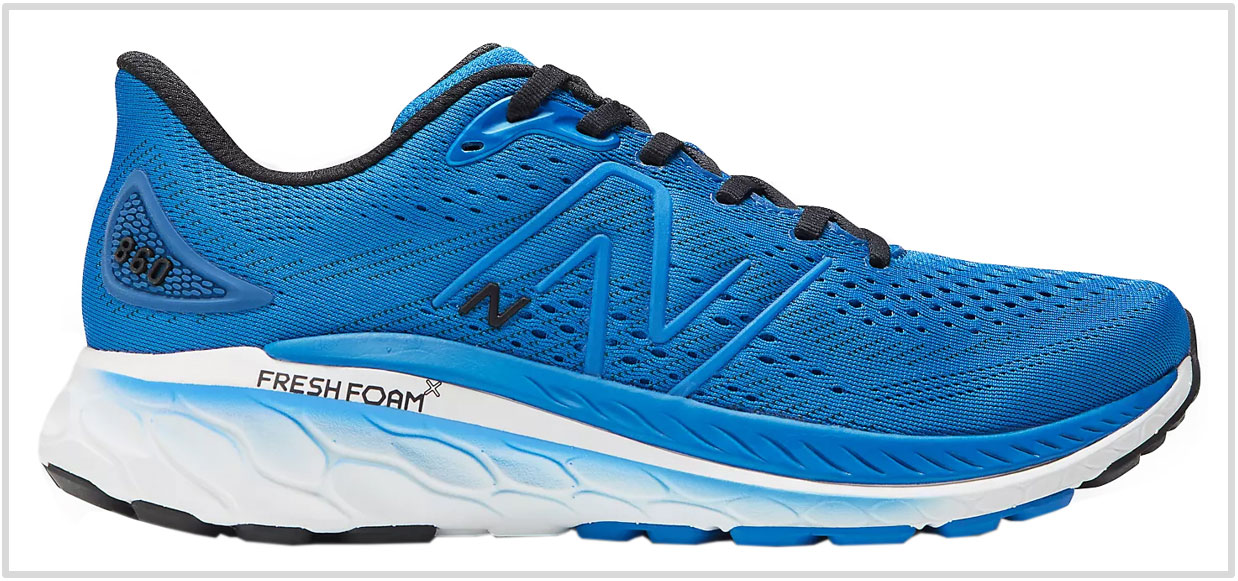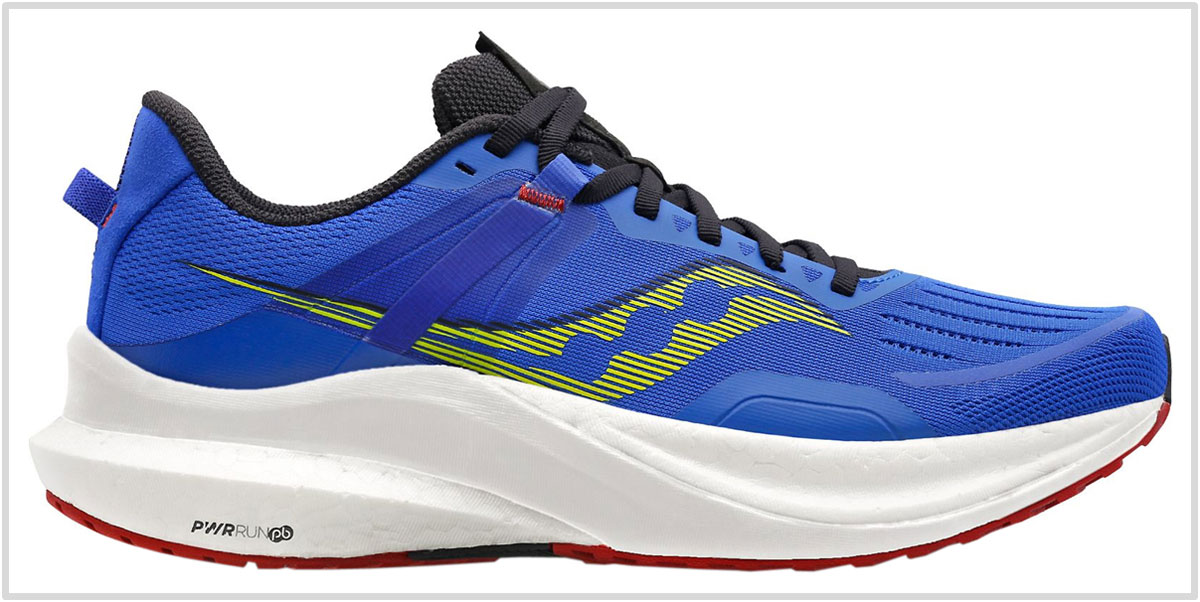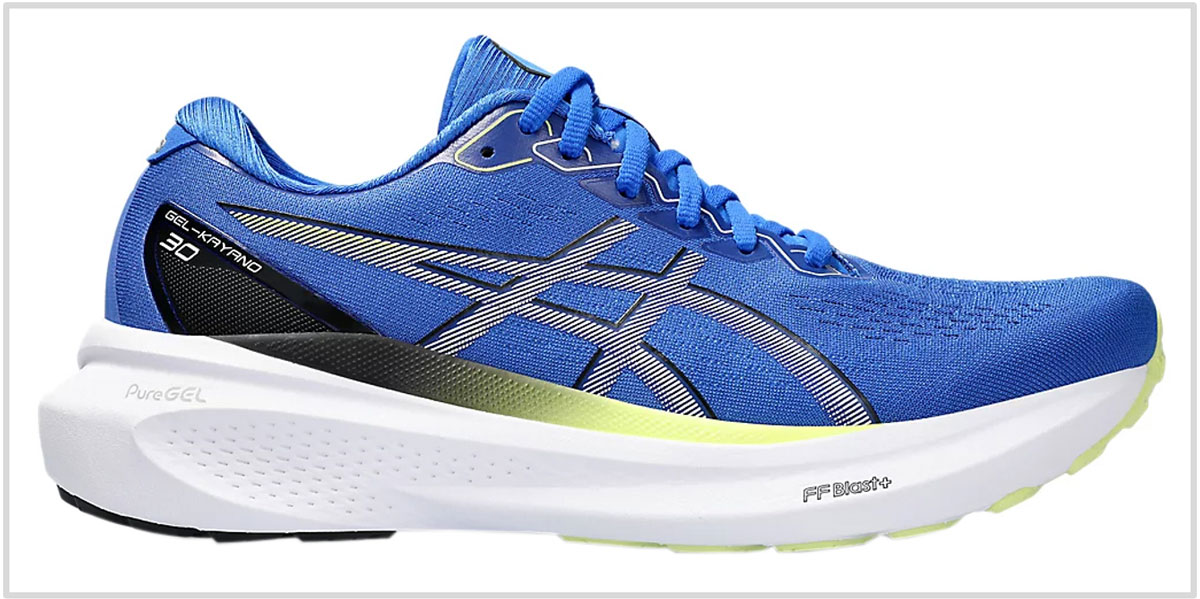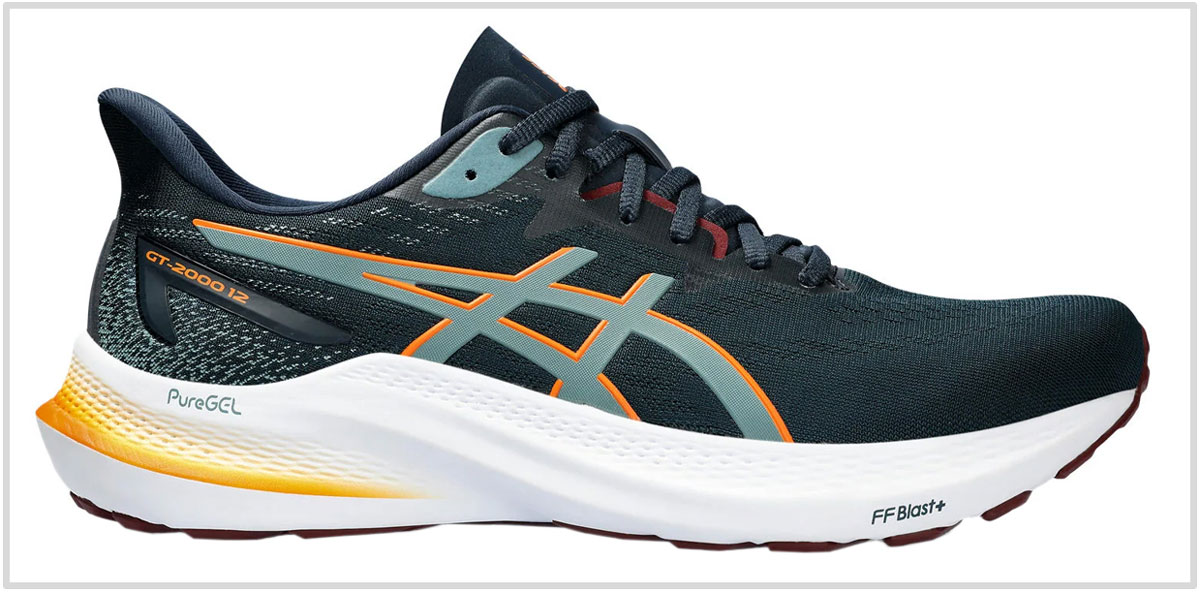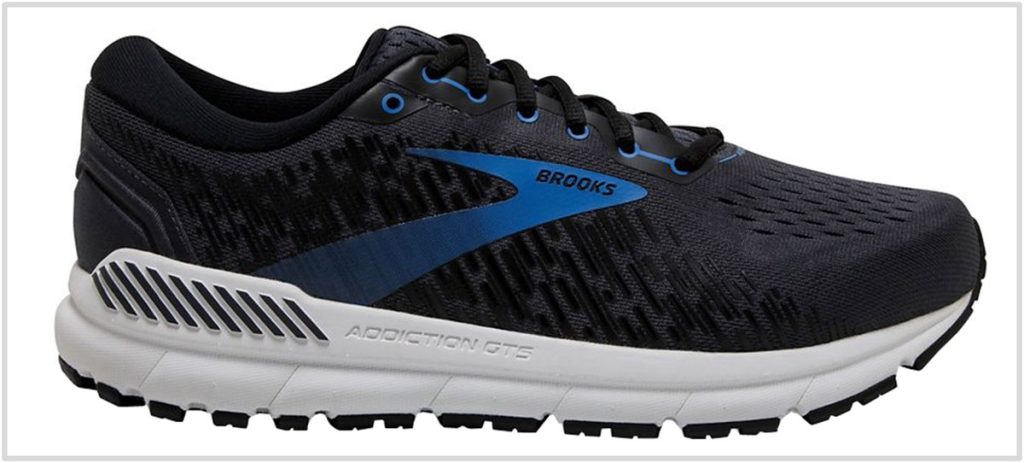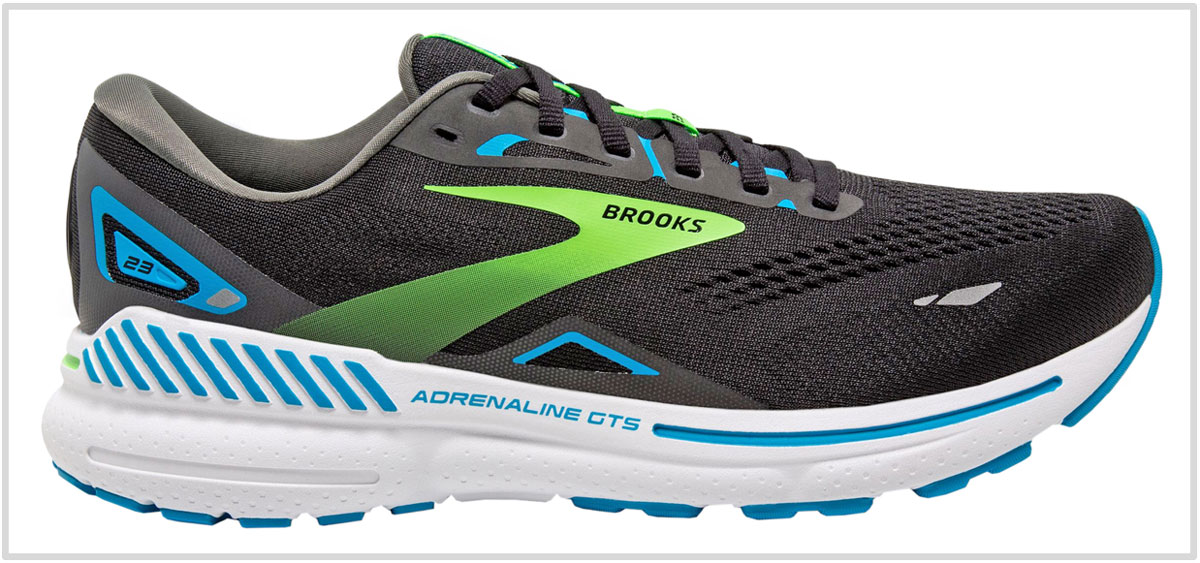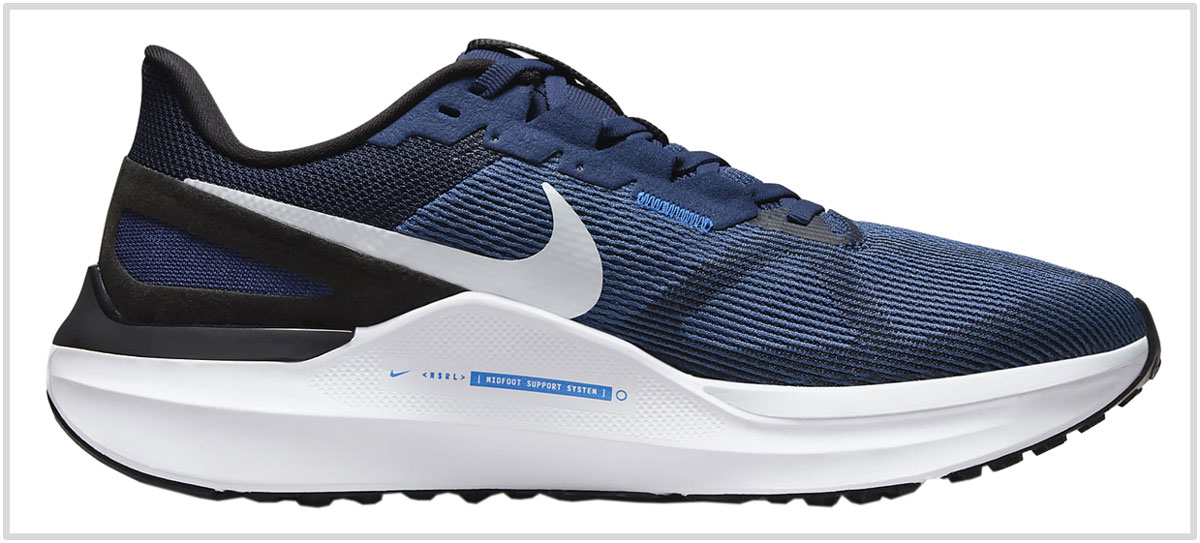This article has been updated with current models for November 2023. The Asics GT-2000 11, Asics Kayano 29, Brooks Adrenaline GTS 22, New Balance Vongo V5, Nike Structure 24, and Saucony Guide 15 have been replaced with their updated versions. The Asics Kayano Lite 3 has been removed. The Asics Kayano 30 and GT-2000 12 have different stack heights for men and women.
In this product guide:
- 1. Factors to consider
- 2. Stability shoe with gait correction: New Balance Vongo V6
- 3. Stability shoe with a firm ride: Saucony Guide 16
- 4. Stability shoe with a medial post: New Balance 860V13
- 5. Cushioned trainer with supportive ride: Saucony Tempus
- 6. Cushioned trainer with a medial post: Asics Kayano 30
- 7. Cushioned trainer with a medial post: Asics GT-2000 12
- 8. Max stability trainer with arch support: Brooks Addiction GTS 15
- 9. Cushioned trainer with arch support: Brooks Adrenaline GTS 23
- 10. Supportive trainer with neutral ride: Nike Structure 25
Here’s an unpopular take: flat-footed runners do not need to wear a ‘stability’ shoe with a medial post or equivalent features like raised midsole edges (Guiderails).
There’s a misconception that flat-footed runners are (more) prone to injuries, and thus the need for specific footwear. That is wrong because even regular-arched runners get injured as frequently.
If there is a conclusive study or peer-reviewed research that proves that flat-footed runners are more prone to injuries than non-flat-footed runners, then we’d like to read it.
Not all stability shoes are alike. The Brooks Adrenaline GTS 23 works differently than the New Balance Vongo; the latter functions differently than an Asics Kayano 30 or Saucony Guide 16.
The stability running shoe had its origins in the early 1980s when the athletic footwear industry was still in its infancy. Back then, most shoes used a primitive midsole design that involved gluing a mesh upper to a low-quality midsole made of die-cut EVA foam.
All runners pronate regardless of their arch height, and some do it more than others. So in those days, the said rolling motion caused the inferior midsole to flatten on one (medial) side.
This led to the rise of different stability devices to make the inner midsole more supportive.
The high incidence of injuries in that era – certainly made worse by the inferior shoe design – led to the paradigm that views ‘overpronation’ or arch type as a cause of injury.
Flat feet were assumed to be a pre-condition for excessive rolling in, hence resulting in the conflation of the two factors.
In short, the entire medial post and pronation thing is a 70~80’s deal, based on a then-valid theory formed under an entirely different set of circumstances.
However, modern running shoe midsoles are highly advanced – both from a design and material standpoint.
Standard ‘neutral’ shoes such as the Asics Superblast and Brooks Ghost 15 offer high levels of inherent stability. Also, most contemporary foam materials will outlive the rest of the shoe.
So if you have flat feet and are looking for a shoe, what should you buy?
It’s pretty obvious that we aren’t going to draw up a definitive list of shoes that are ‘suitable for flat-footed runners.’ There’s no guarantee that this recommendation works, and anyone who tells you otherwise needs to know better.
The best way is to use your existing shoe as a reference. If a shoe has worked for you (in the past) without any problems, then the next shoe should have a similar fit and ride. Conversely, look for qualities that are missing in your existing shoe.
What we’re going to do here is recommend models based on the set of attributes you’re looking for, or have (previously) experienced in an existing shoe. For instance, a certain group of runners prefer a stability shoe without the corrective ‘motion control’ behavior.
So that you know, a shoe with a noticeable motion-control ride divides the midsole into firm and soft sections, with the medial (inner side) being firmer than the lateral (outer) area.
Others may prefer a shoe that has the said firm and soft set-up. Some may want a shoe that comes with a noticeable sensation of under-arch support. And a small percentage of individuals want none of the medial posting business, and simply need their shoe to be cushioned and supportive.
Ultimately, the best running shoe is what you’re comfortable running in, and we hope we can help point you in the right direction. This isn’t a simple list, nor is it exhaustive – because a running shoe is a very personal choice.
True stability shoes with a supportive ride quality.
1) New Balance Fresh Foam Vongo V6
The Vongo has never been your average stability running shoe. Except for the Vongo V5, none of the Vongo models had a medial post. For example, the Vongo V1 had a split outsole and a deep transition groove that kept the weight centered and supported.
The Vongo V6 experiments with a brand-new ‘motion control’ feature, and it seems more effective than a medial post or raised sidewalls.
Sandwiched between the two midsole layers is a stiff plate with an unusual design. When viewed longitudinally, the inner half (arch side) is solid, whereas the outer half has large windows. Naturally, the side with the windows is easier to compress when loaded.
It’s anybody’s guess what the outcome is. The Vongo V6 has a healthy amount of medial side support, with some cushioning bias that favors the outer side. The thick Fresh Foam midsole and articulated outsole work together to produce distance-friendly ride comfort. The forefoot has softer blown rubber pads for padded landings and take-offs.
The Vongo V6, like most new NB releases, uses a soft mesh with plush material trims. The interiors lock the foot down with plenty of supportive comfort.
2) Saucony Guide 16
The Saucony Guide 16 is based on the same midsole and outsole as the Guide 15, so we recommend reading our comprehensive review.
From a stability standpoint, there are many things that the Guide 16 gets right.
The midsole is adequately cushioned for long-distance runs, yet firm and supportive. Instead of a firmer medial post, Saucony uses a plastic stabilizer to make the inner midsole supportive.
The Guide 16 has a deep transition groove that keeps the weight centered during the gait cycle.
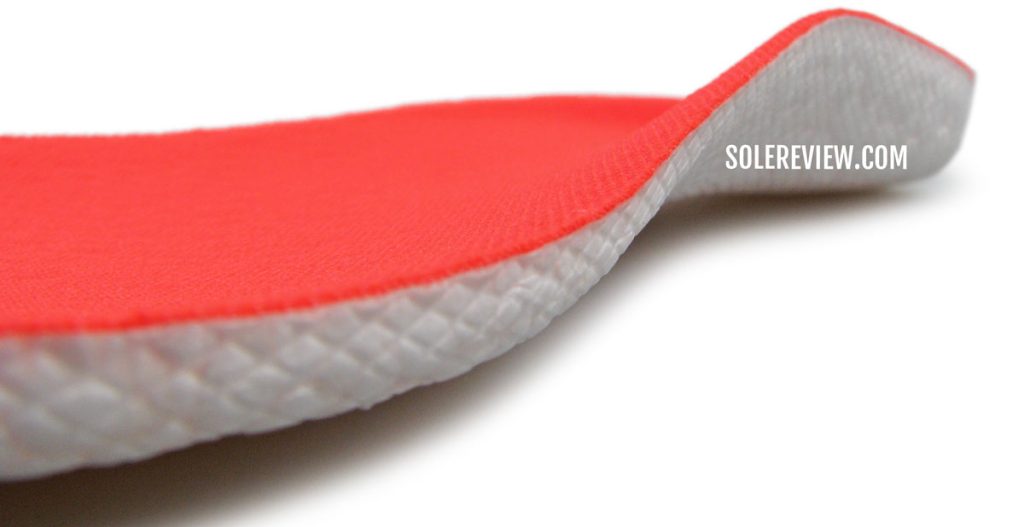
The Guide 16’s insole is made of Pwrrun+ E-TPU foam. It’s thick enough to be replaced by a stability Orthotic.
Inside the upper is a thick insole made entirely of Pwrrun+ – an expanded Polyurethane foam that’s also used on the Triumph 21’s midsole. Its flared design provides plenty of under-arch support.
The fully-sleeved upper is smooth and secure. At the same time, it’s softer and breathes better than the last version; the lightweight upper is almost Kinvara-like.
3) New Balance Fresh Foam 860 V13
The Fresh Foam 860 V13 uses a brand-new midsole that happens to be much softer than the 860V12. That being said, it has one thing in common with the previous model.
Just like the 860V12, the V13’s midsole has a medial post – a firmer wedge of foam on the inner midsole. The midsole on the arch side also has raised edges, so the inner midsole is noticeably more supportive than the outer side.
In short, even with its modern Fresh Foam X midsole and upper design, the 860V13 is unmistakably a stability shoe. The soft and comfortable upper fits true to size, and is available in three optional widths.
The firmer wedge blends seamlessly into the midsole, whereas the rest of the midsole makes the 860 comfortable enough for most runs. The combination rubber outsole grips well and helps with smooth transitions.
To sum up, the New Balance Fresh Foam 860V13 is a versatile trainer that will appeal to most runners, flat-footed or otherwise.
4) Saucony Tempus
Saucony is great at ‘borrowing’ running shoe concepts from other brands and adding value through improvements. The Endorphin Speed and Pro are good examples, and so is the Everun (aka Pwrrun+).
The Tempus has precedence in the adidas Sequence Boost, but it’s a much better and refined running shoe. Our detailed review has more.
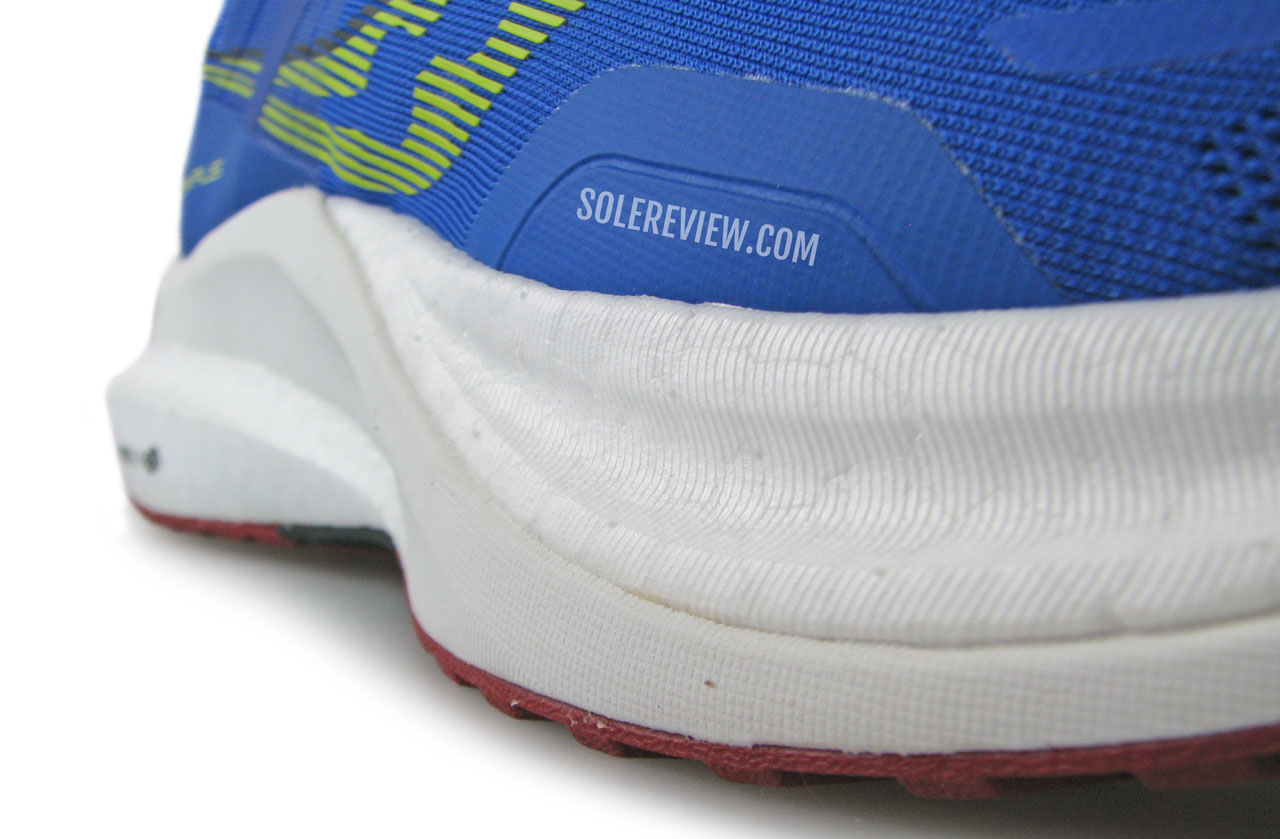
The EVA frame slopes downwards to form the forefoot base.
The firm EVA frame locks over the cushioned Pwrrun PB (PEBA foam) midsole to produce a unique blend of ride comfort and stability.
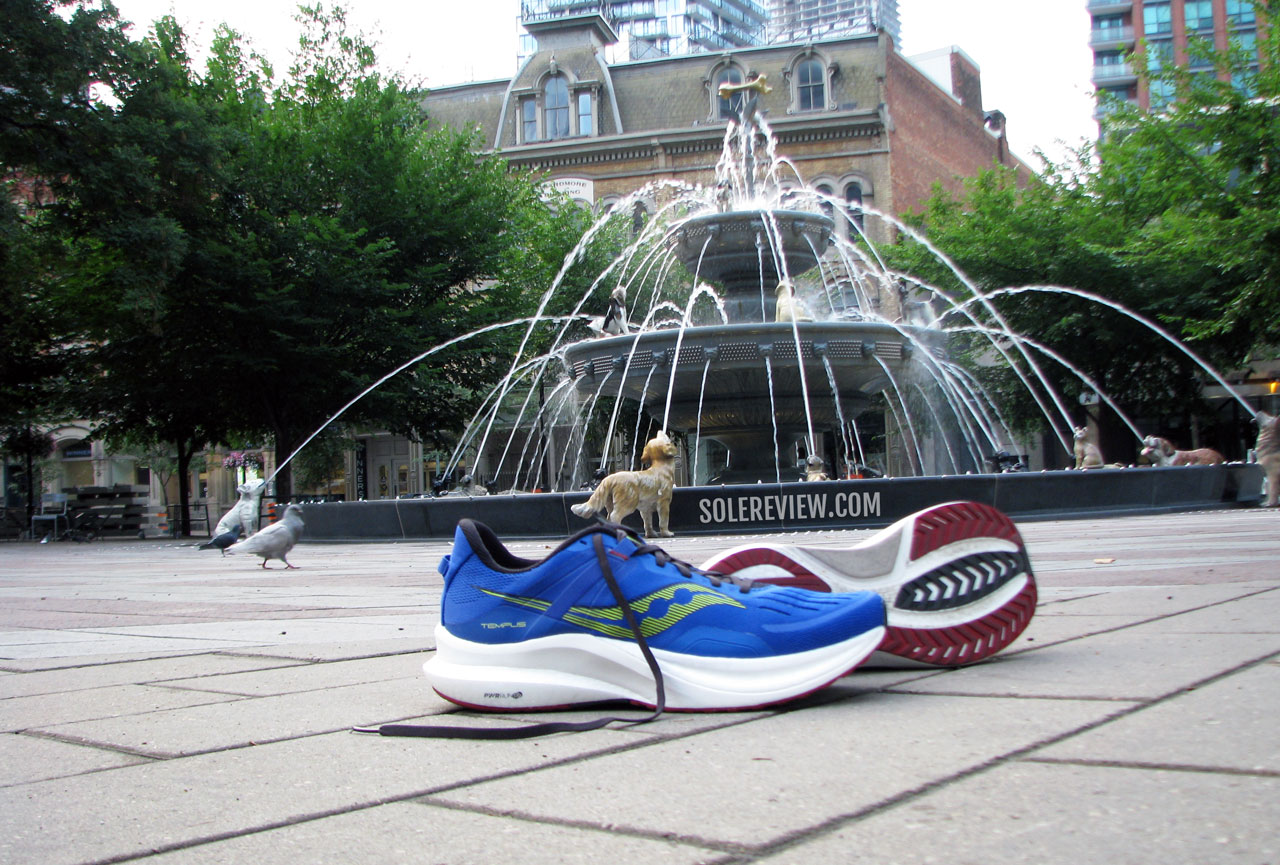
Even though the inner midsole is more supportive than the outer side, it doesn’t create a bias. That’s good news if you’re looking for a supportive shoe that doesn’t feel intrusive, and is versatile and comfortable for different runs.
The upper is extremely breathable, and is lined with soft materials for interior comfort.
‘Motion control’ shoes with firmer medial (inner) and softer lateral (outer) midsole sidewalls.
5) Asics Kayano 30
Despite its top-to-bottom redesign and softer ride, the Kayano 30 feels familiar. That’s because the Kayano 30 is modeled after the Kayano Lite rather than the medially-posted Kayano 29.
The midsole is softer due to the wide Flytefoam Blast+ midsole. Also note that the visible Gel window from last year’s model has disappeared, just like the Nimbus 25.
All these updates produce a neutral trainer with soft and supportive cushioning. While there’s ample comfort for daily and long-distance runs, intervals and speedy road races are not its forte.
The true-to-size upper is plush and sells in many widths; even a reflective ‘Lite-Show’ version is offered. The padded heel collar and internal counter keep the foot locked in.
The Women’s Kayano 30 differs from the men’s model in its midsole thickness. The women’s Kayano 30 has stack heights of 39 mm (rear) and 29 mm (front), so that’s 1 mm lower than the men’s version.
6) Asics GT-2000 12
We view the GT-2000 12 as a toned-down version of the Kayano 30. And that makes sense, as the GT-2000 has always been a milder stability trainer version of the Kayano. It’s over an ounce lighter, so it also happens to be the more versatile of the two.
Just like the Kayano, the GT-2000 12’s midsole design charts a new course. The midsole drops the visible Gel pad, medial post, and switches to a cleaner visual scheme and softer cushioning.
With these changes, the GT-2000 12’s ride character takes on a ‘neutral’ flavor. There’s a slight hint of cushioning bias, but the GT-2000 12 feels closer to a neutral trainer (say, Cumulus 25) than it’s ever been.
The upper is standard Asics fare, meaning that the shell is made of an engineered mesh with a smooth interior. The padded heel and tongue help lock the foot down.
It’s worth mentioning that the women’s GT-2000 12 has the same 8 mm offset as the men’s model but with a 1 mm lower stack height.
Cushioned shoes with arch support. These models have a filled-up under-arch area or high midsole sidewall.
7) Brooks Addiction GTS 15
Like the Brooks Beast, the ultra-cushioned Addiction GTS 15 has a set of ‘Guiderails’ – raised sidewalls that cup the foot on either side. This design makes it ideal for flat-footed runners who require a lot of underfoot support.
Hypothetically speaking, even if the Guiderails were missing, the wide midsole has plenty of inherent stability. The broad forefoot and heel result in a planted ride, and the rubber outsole provides coverage without any deep grooves. That helps with traction and overall stability.
The thick insole can be removed to accommodate an aftermarket Orthotic as well. The sleeved upper is spacious, smooth, and secure – just like the Beast.
8) Brooks Adrenaline GTS 23
The Brooks Adrenaline isn’t what it used to be; it has transformed into a completely different shoe. First, it dropped the firmer medial post and adopted the ‘guide rails’ – Brooks lingo for raised midsole sidewalls. In doing so, it ceased to be a traditional ‘stability’ shoe.
Just like the Brooks Ghost 15, the Adrenaline GTS 23 has (mostly) a single-density midsole from heel to toe. Only the inner ‘Guide Rail’ is made of a firmer foam for under-arch support.
Except for minor superficial tweaks, the Adrenaline GTS 23 is similar to the GTS 22. In other words, this is still a comfortable pair of Adrenalines, one that can be used as a daily trainer or long-distance shoe. The soft insole adds step-in plushness, and the articulated outsole makes the landings and transitions less jarring.
The full rubber outsole does what it does best – it grips effectively while working cohesively with the midsole.
There’s an expected level of Brooks plushness inside the upper, all while fitting smooth and true to size.
Supportive neutral shoes
Supportive running shoes from the neutral category are also worth considering. Many models blend cushioning and support, and are safe choices for most runners regardless of their gait orientation.
9) Nike Structure 25
The Nike Structure 25 is new, but not really. In the sense that there’s no novel stability device like the New Balance Vongo. Instead, what we have is a cushioned, albeit supportive, midsole with a Zoom Air bag and raised sidewalls.
Every brand is doing the raised-edges-under-the-arch thingy, and the Nike Structure 25 gets on that bus as well. That makes the Structure 25 a supportive-neutral running shoe that marries distance-friendly cushioning with a stable ride.
The medium-soft ride (and that includes the snappy Zoom Air forefoot) makes the Structure 25 versatile – be it everyday training, slightly higher-paced runs, or even high-mileage outings.
The foot is securely held in place by a sleeved upper with padded interiors.
Do you own any of these shoes? Improve this review by sharing your insights – submit a review here.

